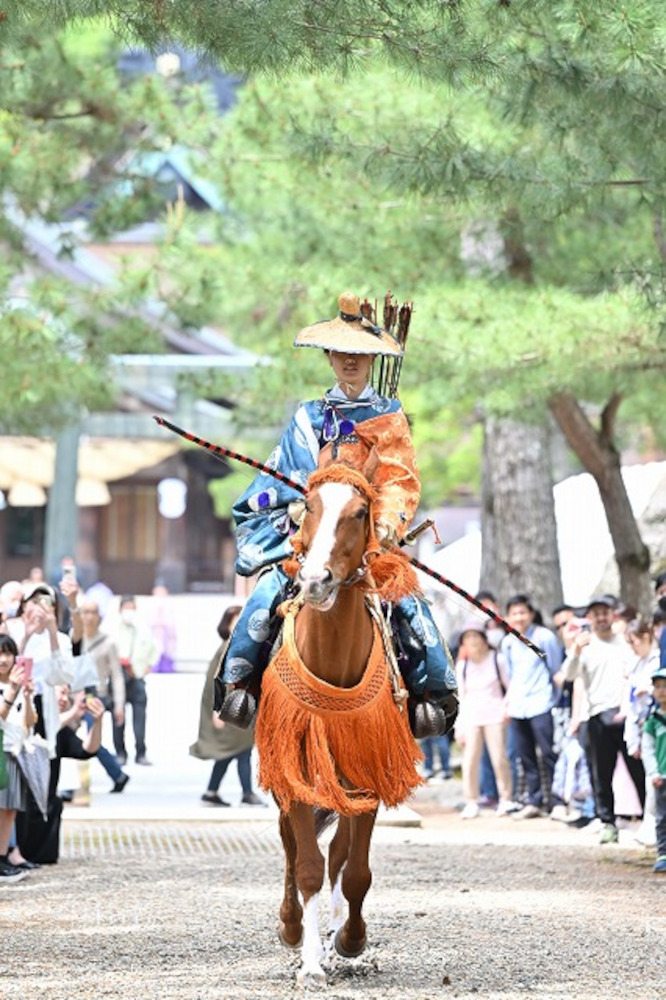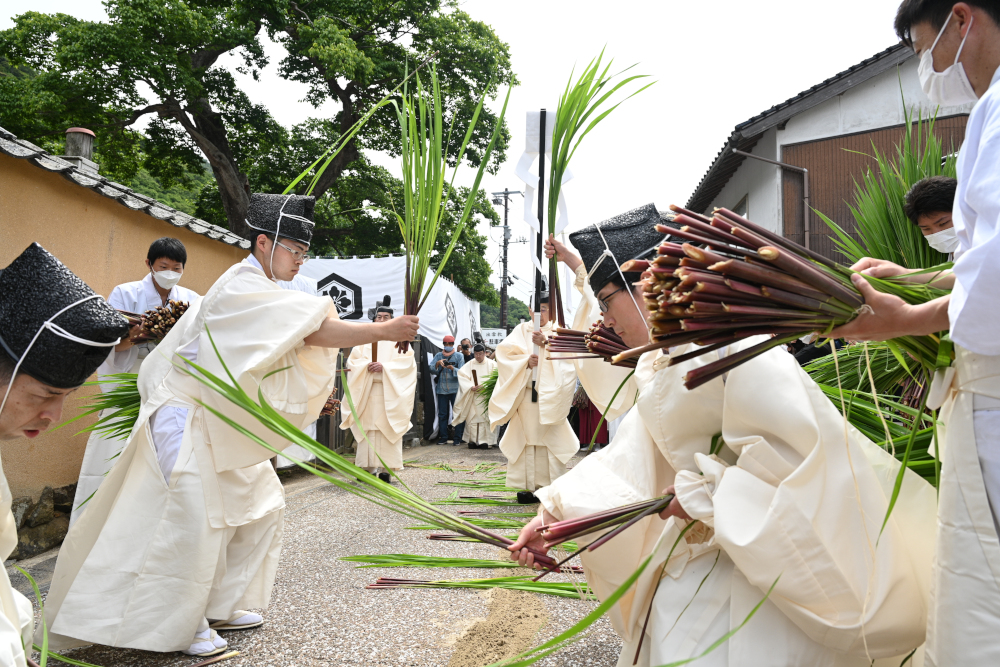Religious Events at Izumo Oyashiro Shrine

More than 70 rituals and other religious events are conducted at Izumo Oyashiro Shrine during the course of the year. Among them are purification rites, memorial services, and prayers for a bountiful harvest. Some of the annual rituals are unique to Izumo and reflect the shrine’s close associations with the mythological foundations of Shinto.
The shrine’s calendar of rituals begins with the Ōmike Festival on the first of January. The priests pray for safety and success in the New Year, and local agricultural products are offered to the deities.
The shrine’s most important annual ritual, the Grand Festival (daisairei or reisai), occurs over three days in mid-May. It includes an offering sent by the emperor and a series of sacred dances to pray for a bountiful harvest. This is also the one time of the year when priests deviate from Izumo Oyashiro’s standard form of prayer—two bows, four claps, followed by one final bow—and increase their claps to eight.

The Suzumidono Festival, held on the first of June, marks the approach of summer. In the nearby forest, about 200 meters from the shrine, the chief priest (kokuso) performs a prayer of protection from illness and injury in the summer heat. He then carries a large staff with plaited paper streamers (a gohei) in a procession to the Mitarashi Well in the southeast corner of the inner precincts. As he walks, other priests cover his path with stalks of Manchurian wild rice. Worshippers then take these stalks home and display them in their entryway or household shrine (kamidana) to prevent illness.

The most distinctive rites at the shrine are held during the tenth month of the lunar calendar. Called the “month without gods” (kannazuki) across most of Japan, this period is known in Izumo as the “month with gods” (kamiarizuki). It is believed the myriad deities from all across Japan assemble at the shrine to determine the relationships that people will form throughout the upcoming year. The gathering begins on the tenth day of the tenth month, when the priests welcome the deities arriving at Inasa Beach, the seashore west of the shrine. From the eleventh day through the seventeenth day, rituals are performed while the deities are meeting, but these rituals are performed very quietly so as not to disturb the deliberations. Traditionally, local residents also restrained their activities and kept quiet during this period. Finally, farewell ceremonies are conducted twice: once on the seventeenth day, when the deities disperse to other shrines in the region, and again on the twenty-sixth day, when they depart the Izumo region entirely.
Several rituals concern the unique role of the chief priest at Izumo Oyashiro. The shrine’s family of chief priests is said to have descended from Amenohohi no Mikoto, the second son of the sun goddess Amaterasu Omikami. Amenohohi was assigned to serve the deity Okuninushi no Mikoto for eternity as part of the agreement described in the kuni-yuzuri (“relinquishing the land”) myth. When a new chief priest is appointed, he performs a ceremony in which he lights a sacred flame using the same ancient tools as Amenohohi—thereby inheriting the duty to serve Okuninushi. Another example is the Kodenshinjo Festival held in November, where the chief priest shares a meal with the collective heavenly and earthly deities (tenshinchigi). This ritual is said to rejuvenate his spirit so that he may continue to serve the deities in the following year.
These annual rituals are conducted in addition to the daily offerings of food (onikku) presented to the shrine’s deities each morning and evening. The offerings consist of rice, sake, vegetables, and fruit, and they are typically shared among the priests after they are removed from the Honden (main sanctuary). While not as complex as the larger rituals, these offerings of food serve as daily prayers for the prosperity of the country and the imperial household.
(This English-language text was created by the Japanese Tourism Agency.)
